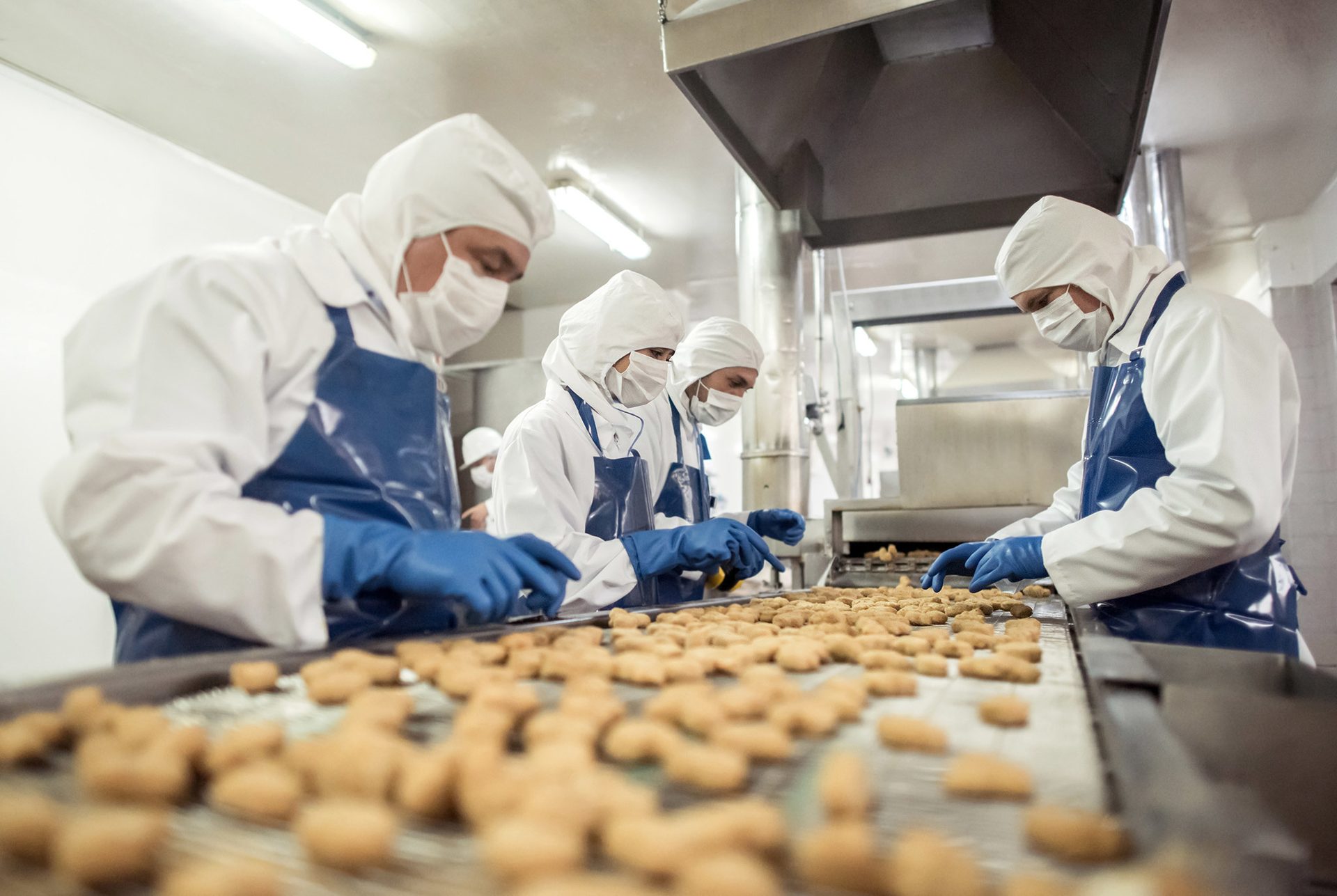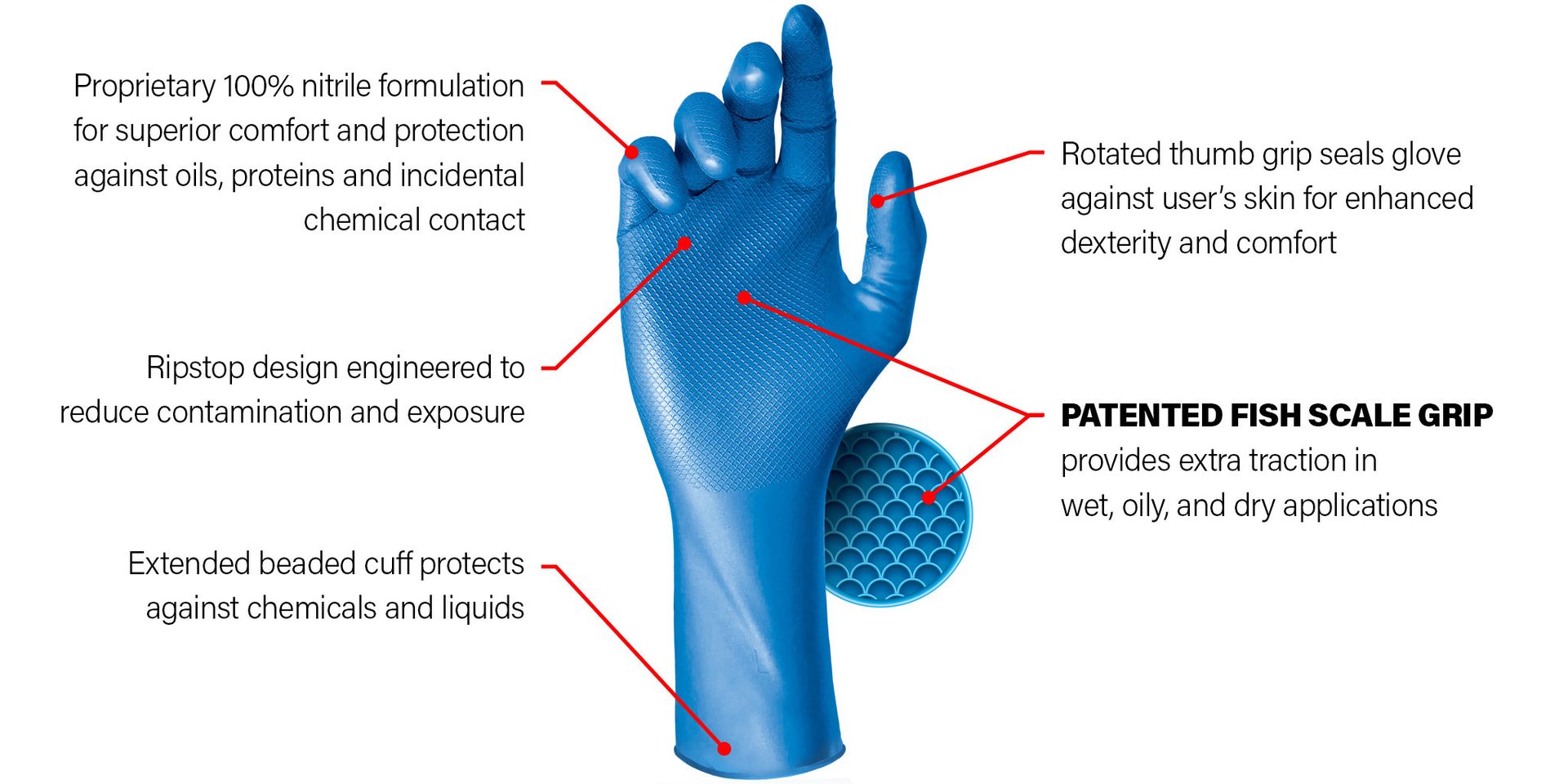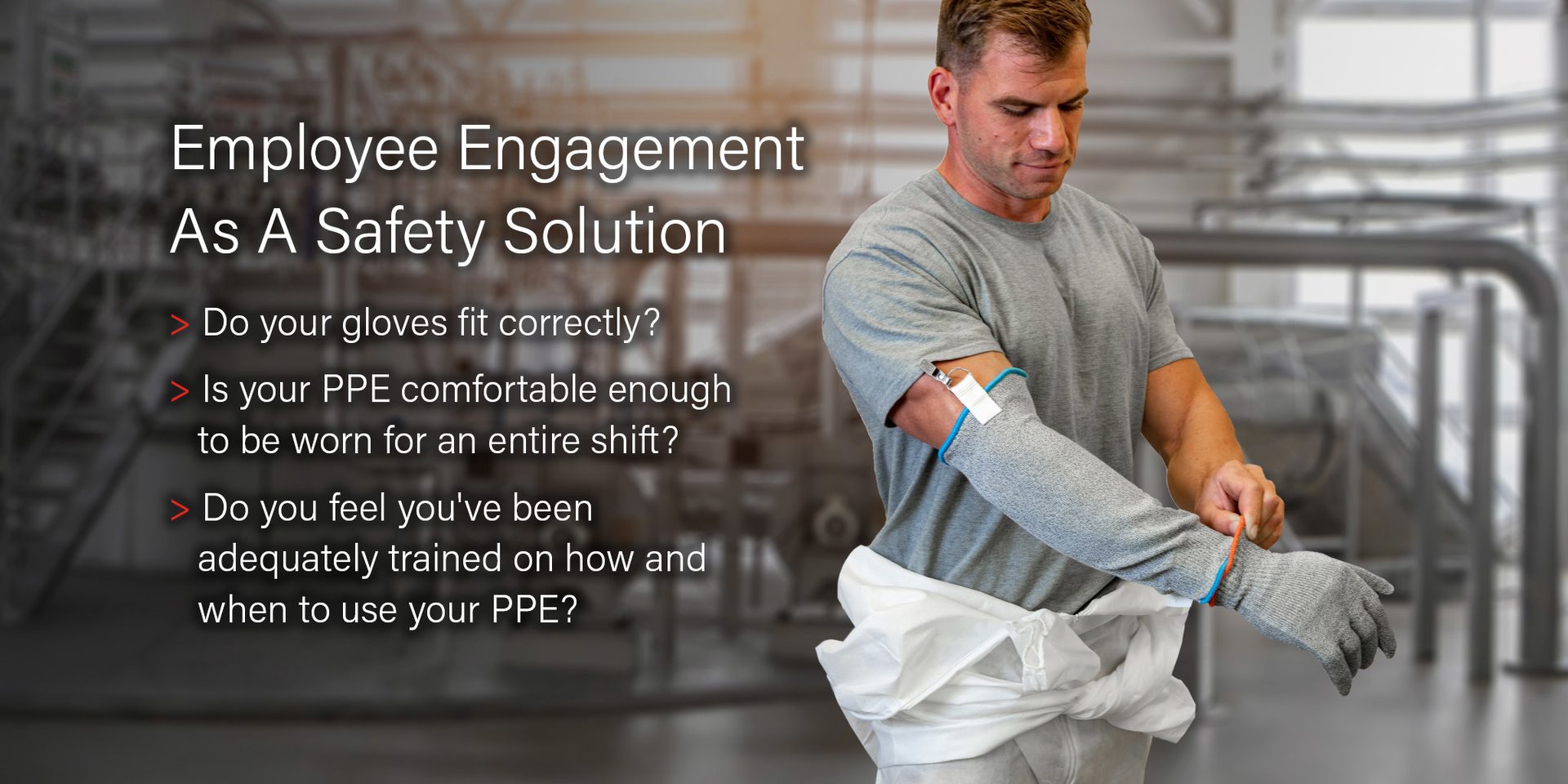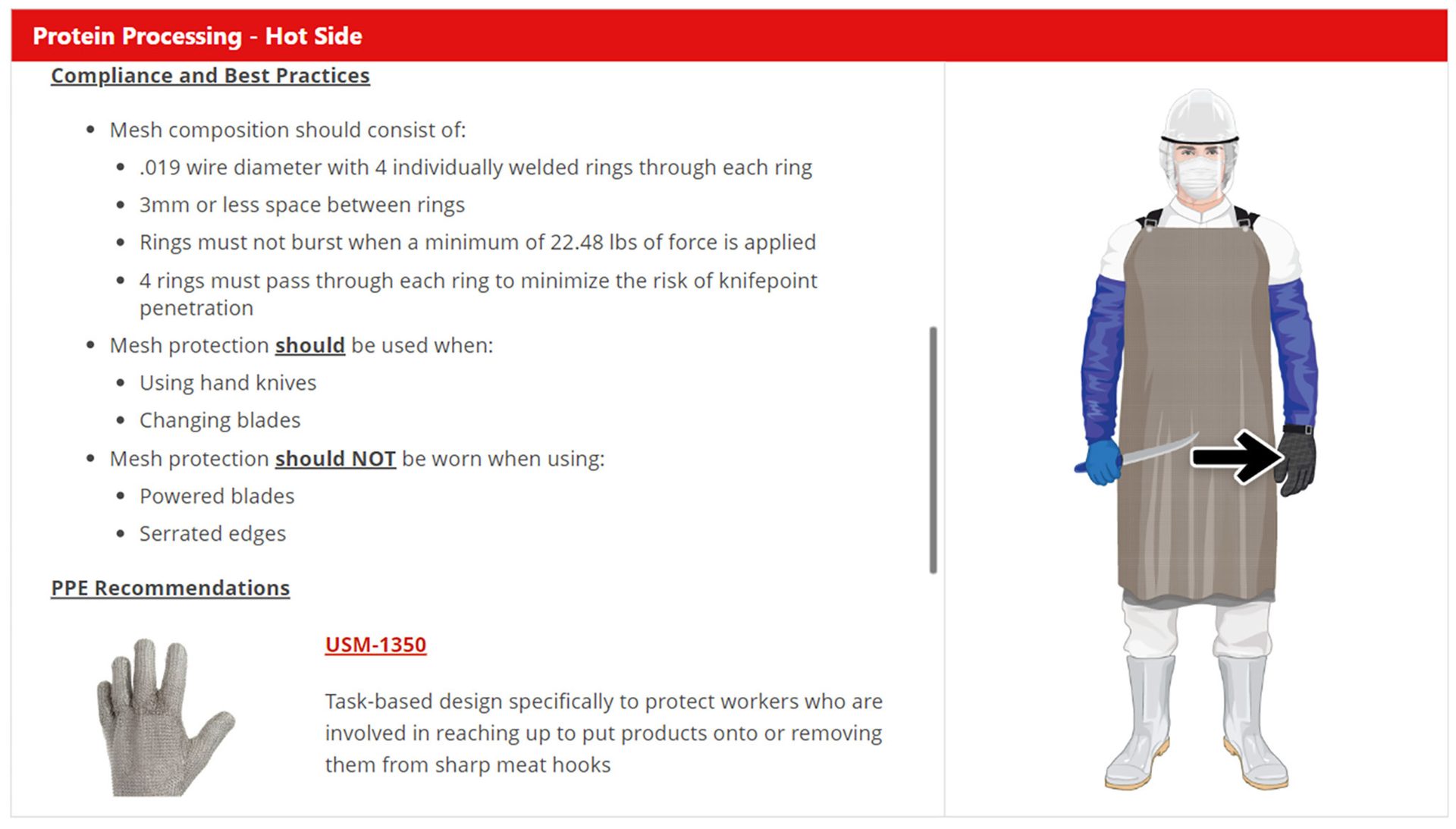Building the Foundation of Effective Food Safety Culture with Personal Protective Equipment
By Danielle Woodruff

There’s a shift happening within all levels of the food industry, with the subject of personal protective equipment (PPE) being one of the catalysts. Despite innovations in PPE that address barrier and cut protection, foodborne illness, foreign material and allergy contamination, food system industries as a whole still have a higher rate of more severe injuries and morbidity rates when compared with non-food private industries overall, and product recalls are increasing instead of declining. As a result, organizations recognize the increasing need to build effective food safety cultures. The question remains, how do companies commit to creating a safety culture that influences employee behaviors to reflect institutional values?
It's not often considered how personal PPE is to workers. From a food safety perspective, PPE protects both the worker and the product. It’s viewed as the last line of defense to protect employees from physical, chemical and even biological hazards while protecting the food supply from potential contamination and recalls. These reasons alone seem like they would be enough to convince any worker to wear their personal protective equipment, but finding the right balance is more than just addressing hazards – it’s about influencing workers’ perceptions.

Companies that successfully implement programs to build effective safety culture take a holistic approach to PPE functionality as part of a behavior-based food safety management system. This type of system uses leadership techniques to change how workers identify with their PPE by setting clear and simple goals, using open, proactive communication to identify concerns and measuring the results for improvement. Giving workers a stake in their safety and the safety of others is an inclusive process that has proven to positively influence how PPE is viewed within an organization.
“How leaders communicate the safety value of PPE directly influences workers’ views and interactions with their safety equipment. Engaging employees for feedback invites them to become part of the solution as potential problems and opportunities arise.”
The Key to Personal Protective Equipment in Food Safety: Collaborating with Workers
Successfully implementing this type of program requires leaders to commit to improving collaboration and safety at all levels of an organization. To begin, companies must identify how the required PPE workers need fits into their system’s continuous improvement model. Once identified, workers will look to organizational leaders to create, implement and sustain an effective food safety culture. Positive perceptions of PPE start at the top and, aside from leading by example, effective communication is the best tool at any leader's disposal.

How leaders communicate the safety value of PPE directly influences workers’ views and interactions with their safety equipment. Engaging employees for feedback invites them to become part of the solution as potential problems and opportunities arise. Part of a well-communicated food safety plan should include leading questions that make workers feel not only seen but also heard. Examples include asking about the fit and feel of their PPE and if it’s comfortable to wear all day, if they feel confident that they’ve received enough training on proper usage, or if they feel their suggestions regarding PPE are valued.
Employee Education vs. Training – What’s The Difference?
Education and training require different approaches when building behavior-based systems. Educating workers in food safety PPE means discussing physical and contamination hazards, regulatory standards and how PPE, such as metal mesh products, barrier protection, head protection or safety eyewear, addresses those points through company policies. Food safety training instructs workers on the necessary PPE worn for specific tasks, plus why and how it should be donned and doffed.
Workers must understand that, when it comes to food safety, the consequences of worker injuries, like amputation or contamination risks, like foodborne illness, can be dire. Reinforce this knowledge with personal testimonials and case studies which have shown to be more persuasive than group statistics. Using this risk-based training technique emphasizes topics, tasks and behaviors associated with worker injury and contamination and how using the proper protection can help reduce these risks.

Using multiple mediums to communicate food safety information will increase the likelihood of influencing employees and effectively demonstrating the importance of building food safety culture in an organization. Effective mediums include posters illustrating how to don and doff equipment properly, signs reminding workers to secure their PPE to ensure it isn't compromised and educational materials on the PPE workers must wear for specific tasks. Remember, this information must be simple, visible and relevant to the behavior and location to be effective.
The Power of Positive Consequences
All these factors tie into establishing simple, meaningful goals that can be powerful tools to achieve the desired behavior. However, these effectively communicated goals will improve performance only if paired with consequences designed to increase or decrease behaviors. Unfortunately, in the food industry, improper PPE use has many negative consequences, including food supply contamination and severe injury to the worker. However, creating positive consequences can significantly enhance employee performance. Some examples include creating positive outcomes for employees who offer feedback on their PPE, frequently review proper PPE procedures, undergo training or reinforce positive safety culture practices.
Like training and education, consequences alone are not the answer to consistent and sustained behavioral change. It’s all these components working together that create a positive impact on worker safety, food safety and the overall worker perception of their personal protective equipment.
Accountability and Commitment
At the end of the day, changing the perception of safety for employees at all levels of an organization is no small task. However, approaching behavior-based management through feedback, education, training and positively reinforced consequences lays the foundation to accomplish that task. This holistic approach allows workers to invest in their safety and creates a commitment to the food safety culture that everyone builds together.
To get a comprehensive assessment of head-to-toe personal protective equipment for your food facility, speak to a PIP® Food Safety Specialist
Danielle Woodruff is the Marketing Channel Manager for Controlled Environments and Food Safety at PIP®, a global PPE leader in worker safety with a line of 10,000+ diversified products including head-to-toe protection for Food Safety, Controlled Environments, Industrial, Construction, Welding, and Electrical Safety.
IMAGE CREDIT: andresr/E+ via Getty Images & PIP
